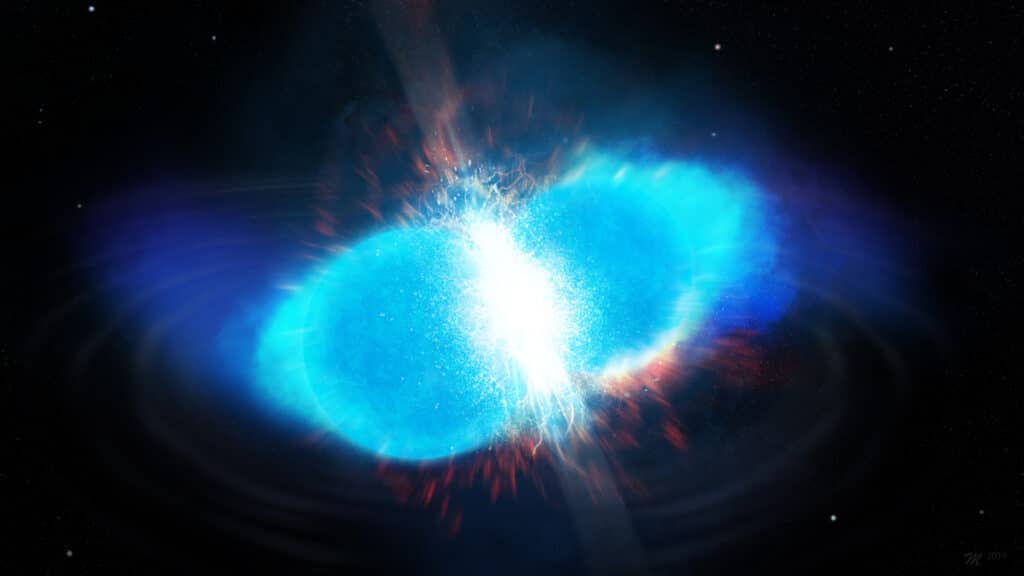Imagine a cosmic explosion so powerful that it creates elements heavier than anything on Earth, like gold and platinum. For decades, scientists have suspected these “heavy elements” are forged in violent stellar collisions. Now, a new discovery sheds light on a surprising twist in this cosmic story: a process called fission, the splitting of heavy atoms, might be playing a key role!
Look at the periodic table. Everything above iron, like silver and gold, is thought to be born in stellar explosions called supernovae or the merging of two super-dense neutron stars. But how exactly do these elements come to be? The study, led by astrophysicists and physicists, including Matthew Mumpower of Los Alamos National Laboratory, reveals evidence indicating the presence of superheavy nuclei and the operation of fission in the cosmos.
Goin’ Fission
Fission, commonly known for its role in nuclear reactors and weapons, is now believed to occur naturally in space, contributing to the formation of heavy elements. “People have thought fission was happening in the cosmos, but to date, no one has been able to prove it.,” Mumpower says in a statement.
Mumpower and his team looked for clues in the composition of old stars, specifically the amounts of different elements present. They noticed a consistent correlation: when the abundance of light precision metals like silver increased, so did rare earth elements like europium.
“The only plausible way this can arise among different stars is if there is a consistent process operating during the formation of the heavy elements,” Mumpower explains, calling the correlation “incredibly profound.”
This connection wouldn’t happen by chance, it hinted at a consistent process at play — fission.
“We have shown that only one mechanism can be responsible — fission — and people have been racking brains about this since the 1950s,” adds Mumpower.
The Role of the r-process and Fission
To understand this discovery, one must grasp the concept of the r-process, or rapid-neutron capture process. This process involves atomic nuclei capturing neutrons rapidly to form heavier elements. Previously, it was uncertain whether some elements created this way grew too heavy and underwent fission, resulting in lighter but still heavy elements. Mumpower’s models, initially presented in a 2020 paper, predicted the distributions of fission fragments for r-process nuclei, which this new research supports.
One of the most striking implications of this research is the potential existence of elements heavier than those currently known, with atomic masses around 260. This suggests that the universe might naturally produce elements beyond our current knowledge of the periodic table.
From Laboratory to the Stars
This research isn’t just about cosmic fireworks. Mumpower’s work at the Los Alamos National Laboratory highlights the connection between scientific research and national security. Studying fission for weapons stewardship has led to unexpected insights into the universe’s heavy element creation process.
“At Los Alamos, we developed nuclear fission models because we can’t measure everything that’s relevant for weapons research as part of the Laboratory’s mission,” says Mumpower.
This discovery marks a significant milestone in astrophysics, offering a fresh perspective on the mysteries of the universe and its elemental composition. It paints a picture of a cosmos where not just violent collisions, but also the splitting of heavy atoms, contributes to the creation of the elements that make up everything from your jewelry to the stars themselves.
The full research paper is published in the journal Science.












